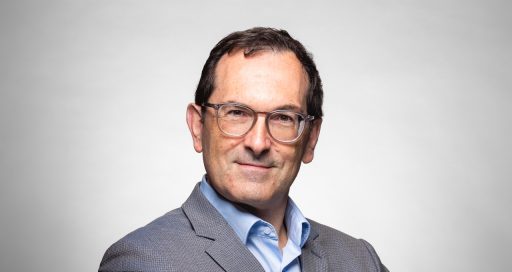“Gaining a comprehensive view of IT-related environmental issues”
Reading time: 6 min
To reduce the impact of its IT activities, VINCI Energies is seeking to increase equipment lifespan and to tighten requirements for suppliers. Repairs are systematically carried out wherever possible. Dominique Tessaro, information systems director, explains.

What role does the VINCI Energies IS department (VESI) play in promoting a circular economy approach in the group?
Since 2008 VESI has been heading up all VINCI Energies IT operations and managing the equipment used every day by our 80,000 users in more than 57 countries. The department is part of a decentralised group comprising a set of 1,900 business units with long-standing operations in their regions, 60 business lines and 5 divisions. VINCI Energies has set itself the goal of cutting its CO2 emissions by 40% by 2030 and achieving carbon neutrality by 2050. Although IT accounts for a relatively small share of the group’s overall impact, we must take all necessary steps in order to meet this collective ambition. This is also a new strategic challenge for VINCI Energies business units that develop and market digital services, given the changes in the market and particularly in public procurement in France.
Could you explain your methodological approach?
To meet this sort of challenge, it’s important first and foremost to be able to measure and, hence, identify metrics which have been agreed, which are clearly understood by IT managers and which are operationally applicable. In 2020 an audit was conducted on the IT impact of our organisation, which helped us to determine a digital responsibility roadmap. This offers each of our business units specific courses of action for working towards emission reduction targets. The goal here isn’t to impose a standard roadmap but to inform the IT managers of each business unit in an exhaustive and accurate way about levers they can pull. We started working on the topic very early on, which resulted in us obtaining the Responsible Digital Technology (Numérique Responsable) label with level 2 status straight away. This certification enabled us to structure our strategy, prioritise our levers and have a comprehensive view of the IT-related environmental and social issues that our IS department was facing.
“If a problem is detected, we fix it.”
What are your priority areas for action?
The IS department’s strategy is based on one key action: to extend equipment lifespan. We stretched the average renewal frequency of workstations from three years to three and a half years, then to four years, then to four and a half years… And today, there’s no limit. An incentive criterion applies to the 600 employees in the department in cases where their own hardware exceeds a lifespan of four years.
And we made it a requirement for our suppliers to increase their warranty coverage from three to four years. Just before this period comes to an end, workstations undergo a full inspection. Some are remastered. If a problem is detected, we fix it. If we can’t fix it or if a repair is too expensive (more than €160, the annual depreciation cost of a device), we replace the equipment which is then sent to a charity or refurbishment company. By the way, I’d like to take this opportunity to condemn the scandal of using Africa and Asia as dumping grounds for waste produced in Europe. I don’t understand why hardware imported by Europe isn’t systematically disassembled in Europe. I would be in favour of a consumer contribution towards financing appropriate waste management centres.
What about smartphones and servers?
We’ve increased the purchase frequency for smartphones from two to three years, and after this time we give staff a financial incentive of €20 per month to keep their handsets longer. Employees who opt for a Fairphone (a sustainably-designed and repairable phone) or a reconditioned smartphone can benefit from this allowance after a period of two years. The aim is to incentivise staff to keep their phones for as long as possible at no cost to the company. We have also started replacing end-of-life giant screens in meeting rooms, which have a large carbon footprint, with laser projector systems. And finally, small-scale office servers will gradually start to be hosted in the cloud. Given their average lifespan, this process should take between five and seven years for our business units.
Have you developed a new approach to procurement policy?
We pursue a responsible procurement policy that targets sustainably-designed or reconditioned IT equipment. We buy 30,000 to 40,000 PCs every year. Environmental, social and governance (ESG) criteria now account for 15% of the final score awarded to suppliers. We push manufacturers to improve every dimension of their value chain: the hardware itself of course, but also the packaging techniques and modes of transport and delivery. However, we remain highly dependent on Microsoft, whose Windows versions are increasingly cumbersome and force us to change equipment that is still in perfect working order. It seems to me that Europe has an essential sovereign role to play here by obliging publishers and manufacturers to develop less expensive offerings. But European regulations are moving in the right direction by taking into account the “right to repair”.
22/09/2023


